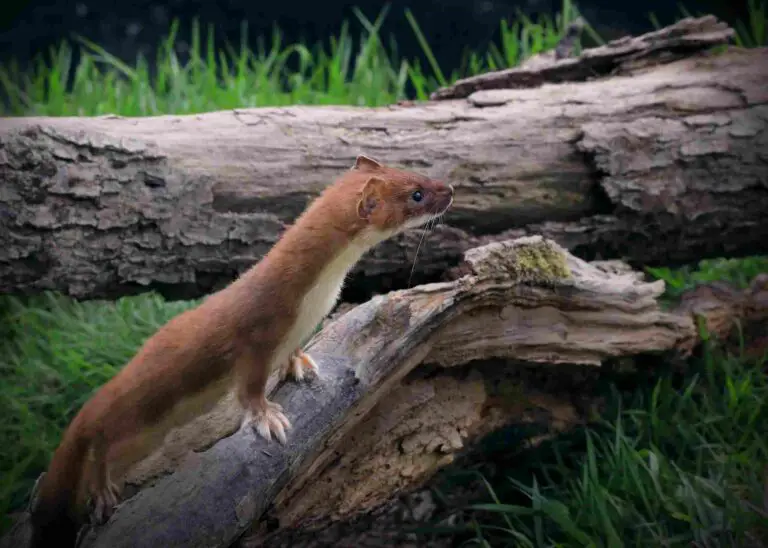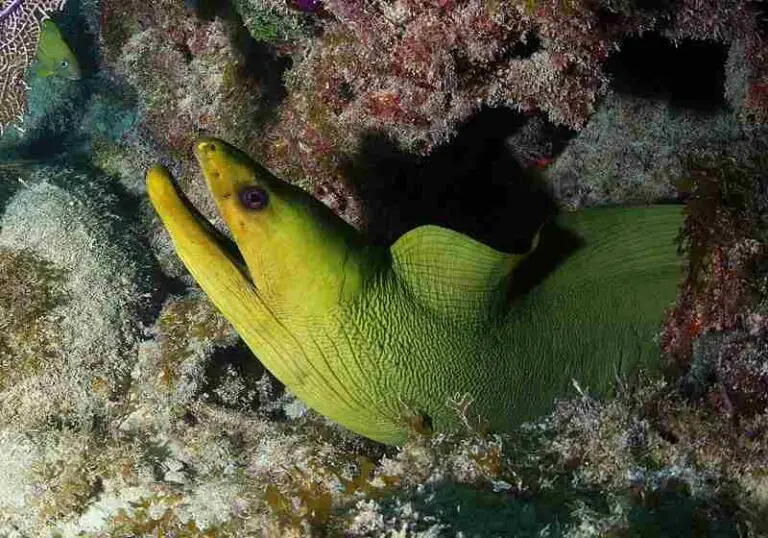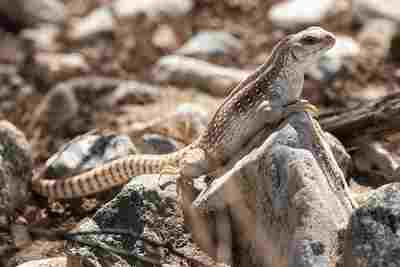19 Tropical Dry Forest Biotic and Abiotic Factors Discussed
Tropical dry forest biotic factors are; primary producers, herbivores, carnivores, omnivores, decomposers, mutualism, parasitism, predation, competition, and adaptation.
Tropical dry forest abiotic factors are; sunlight, atmospheric gases, water, soil, rocks, nutrients, physicochemical parameters, microclimate, and elevation.
This article discusses tropical dry forest biotic and abiotic factors, as outlined below;
Tropical Dry Forest Biotic Factors
Tropical Dry Forest Abiotic Factors
-Tropical Dry Forest Biotic Factors
1). Primary Producers
Primary producers play a crucial role as biotic factors in the tropical dry forest ecosystem, contributing significantly to its biodiversity, stability, and overall ecological functions.
Examples of producers in the tropical dry forest are; deciduous trees, columnar cacti, shrubs, the bel fruit tree, and Ceiba trichastandra.
Their functions and attributes include; nutrient cycling, habitat and niche creation, diversity and adaptation, water conservation, erosion control, influence on food web dynamics, microclimate modification, medicinal and cultural relevance. These areas are discussed below, using examples;
Trees such as deciduous species play a vital role in nutrient cycling. Their seasonal shedding of leaves contributes organic matter to the forest floor, promoting nutrient enrichment of the soil.
Cacti and shrubs provide important microhabitats for various organisms. They create shaded and sheltered spaces, offering refuge to smaller animals and promoting diverse ecological niches within the forest.
Bel fruit tree and Ceiba Trichastandra, contribute to the overall biodiversity of the tropical dry forest. The bel fruit tree, for instance, produces fruit that serves as a food source for many animals, contributing to the diverse dietary needs of the ecosystem. Ceiba trichastandra, known for its towering height, provides vertical structure to the forest, creating different microclimates and habitats.
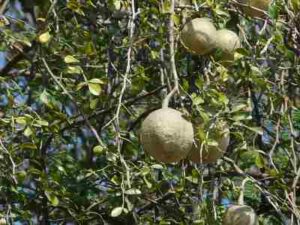
Cacti are adapted to arid conditions and are efficient in water use. Their ability to store water allows them to survive in the dry climate of tropical dry forests, contributing to the overall water conservation in the ecosystem.
The root systems of shrubs and trees, including deciduous species, help in stabilizing the soil and preventing erosion. This is especially important in tropical dry forests where periods of drought and heavy rainfall can lead to soil erosion.
The fruits produced by the bel fruit tree are a crucial component of the forest food web. Various animals, including birds and mammals, feed on these fruits, contributing to the energy transfer within the ecosystem.
The towering height of Ceiba trichastandra influences the microclimate by providing shade and modifying local weather conditions. This can create favorable habitats for certain species and contribute to the overall species richness/biodiversity of the forest.
In addition to its ecological significance, the bel fruit tree often holds cultural and medicinal importance. Local communities may use various parts of the tree for traditional medicines, and the tree itself might have cultural significance in the region.
2). Herbivores
Herbivores play a crucial role as biotic factors in the tropical dry forest ecosystem, contributing to its dynamics, structure, and overall functioning.
The interaction between herbivores and the plant community is a fundamental aspect of the ecological balance in this biome.
Examples of herbivores in the tropical dry forest are; koala bear, deer, some monkeys, and locusts. Some of their features and functions (including seed dispersal, browsing and pruning, ecosystem engineering) are outlined below, with examples.
Primates, including monkeys, play a vital role in seed dispersal.
As they forage for fruits, they inadvertently drop seeds in different locations, contributing to the regeneration and dispersal of plant species within the tropical dry forest.
Herbivores like deer are known for browsing on vegetation. This behavior helps control the growth of certain plant species and prevents overgrowth, allowing for a more diverse and balanced plant community.
While koala bears are more commonly associated with eucalyptus forests, their role in browsing on specific vegetation affects the structure and composition of the plant community.
This selective feeding can influence the dominance of certain plant species in the tropical dry forest.
Some monkey species feed on insects, contributing to the control of insect populations. This herbivore-insect interaction is essential for maintaining the health of the forest ecosystem by preventing outbreaks of certain insect pests.
Herbivores contribute to nutrient cycling by consuming plant material and excreting nutrient-rich feces in different areas of the forest. This process enhances soil fertility and promotes the growth of plants, creating a positive feedback loop.
While locusts are typically associated with crop damage, in a natural ecosystem, their feeding behavior can contribute to maintaining plant diversity by preventing the dominance of specific plant species.
Their impact can create openings for other plant species to thrive.
The feeding preferences of herbivores like koala bears can exert selective pressure on plants, driving evolutionary adaptations.
This process may lead to the development of specific plant defenses, such as chemical compounds or physical characteristics, to deter herbivory.
Herbivores serve as a crucial link in the energy flow within the food chain.
By consuming plant material, they transfer energy from plants to predators, including carnivores and omnivores, contributing to the overall biodiversity and ecological balance of the tropical dry forest.
3). Carnivores
Carnivores play a vital role as biotic factors in the tropical dry forest ecosystem, influencing population dynamics, maintaining balance, and contributing to the overall health and resilience of the biome.
Examples of carnivores in the tropical dry forest are; puma, lizards, snakes, and hawks. They can be discussed within contexts like; population control, disease control, troop structure and behavior, biodiversity maintenance, nutrient cycling, behavioral adaptations, top-down regulation, and ecosystem resilience.
Apex predators like the puma help regulate the populations of herbivores and smaller predators. By preying on herbivores such as deer and controlling their numbers, pumas prevent overgrazing and maintain a healthy balance in the ecosystem.
Carnivorous reptiles, including lizards and snakes, play a role in controlling the population of small mammals and insects. This helps in limiting the spread of diseases carried by these smaller organisms within the tropical dry forest.
Avian predators like hawks influence the behavior and distribution of prey species. The presence of hawks can lead to changes in the foraging patterns and group dynamics of their prey, contributing to a more dynamic and adaptive ecosystem.
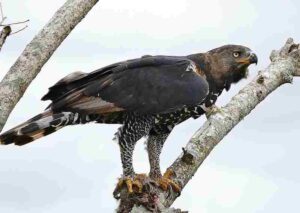
Puma, lizards, snakes, and hawks are tropical dry forest carnivores that contribute to biodiversity by interacting with a variety of prey species. Their presence helps prevent the dominance of certain species, creating conditions for a diverse range of flora and fauna to coexist within the ecosystem.
Carnivores contribute to nutrient cycling by feeding on herbivores. The remains of their prey, including bones and carcasses, enrich the soil with nutrients, providing a valuable resource for scavengers and decomposers.
Carnivorous snakes often exhibit specialized hunting techniques and behaviors, such as ambush predation. These adaptations influence the behavior of their prey and contribute to the overall complexity and diversity of predator-prey interactions in the tropical dry forest.
The presence of top predators like pumas and hawks has cascading effects on lower trophic levels. Their predation can influence the behavior, distribution, and abundance of prey species, affecting vegetation dynamics and other aspects of the ecosystem.
The presence of carnivores contributes to the resilience of the tropical dry forest ecosystem. Their role in controlling herbivore populations and influencing prey behavior helps maintain a dynamic and adaptable system capable of responding to environmental changes.
4). Omnivores
Omnivores play a versatile and important role as biotic factors in the tropical dry forest ecosystem, as they have the ability to consume both plant and animal matter.
Their adaptability allows them to influence various ecological processes, contributing to the overall health and functioning of the biome.
Coati and bear are examples of omnivores in the tropical dry forest.
Factors that highlight the importance of these omnivores include seed dispersal, insect control, diversity maintenance, carrion consumption, ecosystem engineering; adaptability, and top-down regulation.
Omnivores, such as the coati, play a significant role in seed dispersal. As they forage for fruits and insects, they inadvertently disperse seeds through their feces. This contributes to the regeneration and distribution of plant species within the tropical dry forest.
Omnivores like bears contribute to nutrient cycling by consuming a varied diet that includes both plant material and animal matter. The diverse nutrients obtained from their diet are released back into the ecosystem through feces, enriching the soil and benefiting plant growth.
Also, omnivores help control insect populations by including insects in their diet. The foraging behavior of omnivores like the coati can limit the abundance of certain insect species, preventing outbreaks and promoting a balanced insect community.
Omnivores contribute to biodiversity by interacting with a wide range of plant and animal species. Their feeding habits help maintain a diverse ecosystem by preventing the dominance of specific plant or animal species within the tropical dry forest.
Omnivores, particularly bears, may consume carrion. This scavenging behavior helps clean up the forest by efficiently disposing of dead animals, preventing the spread of disease and recycling nutrients back into the ecosystem.
The foraging and feeding behavior of omnivores, such as bears, can influence the structure of the forest. Bears may create "bear trails" or other signs of their activity, which can impact plant distribution and the overall structure of the tropical dry forest.
Omnivores are often adaptable to seasonal changes in resource availability. During times of fruit abundance, omnivores like coatis may primarily consume fruits, while during times of scarcity, they may shift to a diet that includes more insects, small animals, or plant parts.
As both predators and consumers of plant material, omnivores contribute to top-down regulation in the ecosystem. Their presence can influence the abundance and behavior of both herbivores and plants, influencing the overall structure of the tropical dry forest.
5). Decomposers
Decomposers, consisting of bacteria, fungi, earthworms, dung beetles, and other microorganisms, play a critical role as biotic factors in the tropical dry forest ecosystem.
Their activities are essential for breaking down organic matter, recycling nutrients, and contributing to the overall health and sustainability of the biome.
Below is an outline discussing some functions of decomposers in the tropical dry forest.
Decomposers break down dead plant and animal matter into simpler organic compounds. Bacteria and fungi, in particular, are instrumental in the decomposition process, releasing nutrients like nitrogen, phosphorus, and carbon back into the soil. This nutrient recycling is crucial for the growth of plants in the tropical dry forest.
Decomposers like earthworms and dung beetles physically break down organic matter. Earthworms burrow through the soil, creating channels that enhance aeration and water infiltration. Dung beetles play a vital role in recycling nutrients by burying and consuming dung, preventing the accumulation of organic waste on the forest floor.
Earthworms contribute to the improvement of soil structure through their burrowing activities. Their burrows facilitate water movement, root penetration, and the incorporation of organic matter into the soil, enhancing the overall fertility and structure of the tropical dry forest soil.
Decomposer microorganisms can break down pathogens present in dead plant and animal material. This helps control the spread of diseases within the tropical dry forest ecosystem, contributing to the health of both plants and animals.
Decomposers assist in the detoxification of organic material. Some bacteria and fungi have the ability to break down complex organic compounds, including pollutants, into simpler and less harmful forms, promoting a healthier environment within the tropical dry forest.
Dung beetles are efficient recyclers of animal waste. By burying and consuming dung, they not only contribute to nutrient cycling but also help to reduce the presence of potential disease vectors in the forest.
Some fungi form symbiotic relationships with plant roots, known as mycorrhizae, which enhance the plants' ability to absorb nutrients, including carbon. This contributes to carbon sequestration in the soil, playing a role in mitigating the impacts of climate change.
Decomposers act as the final link in the food chain by breaking down dead organic matter. This releases energy stored in organic material back into the ecosystem, supporting the energy flow within the tropical dry forest food web.
6). Mutualism
Mutualism, a symbiotic relationship where both interacting species benefit, plays a crucial role as a biotic factor in the tropical dry forest ecosystem.
These mutually beneficial interactions contribute to the survival, reproduction, and overall health of the species involved.
Examples of mutualism in the tropical dry forest include the relationship between acacia plant and acacia ants, mycorrhizal fungi and plants, as well as angiosperms and pollinators.
Below, the examples and functions of mutualism in the tropical dry forest are discussed;
1. Acacia Plant and Acacia Ants
Acacia plants have evolved a mutualistic relationship with ants. The acacia provides the ants with shelter in its hollow thorns and nectar from specialized glands.
In return, the ants protect the acacia from herbivores by aggressively defending the plant and even attacking potential threats. This mutualism benefits both parties, as the ants gain food and shelter, while the acacia gains protection.
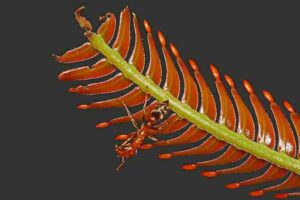
2. Angiosperms and Pollinators
The mutualistic relationship between angiosperms (flowering plants) and pollinators, such as bees, butterflies, and birds, is essential for reproduction.
Pollinators feed on nectar produced by flowers, and in the process, they transfer pollen between flowers, facilitating the fertilization of seeds. This mutualistic interaction is vital for the reproduction and genetic diversity of both the plants and the pollinators.
3. Acacia Plant and Ants (Myrmecochory)
Beyond defense, some acacia species engage in mutualistic seed dispersal with ants. The seeds of these plants have fatty appendages that attract ants.
The ants carry the seeds back to their nests, consume the fatty part, and discard the remaining seed in nutrient-rich ant refuse piles. This aids in seed dispersal and provides a favorable environment for seed germination.
4. Mycorrhizal Fungi and Plants
Mycorrhizal associations involve a mutualistic relationship between fungi and plant roots.
The fungi enhance the plant's nutrient uptake by extending their mycelial networks into the soil, increasing the plant's access to water and minerals. In return, the plant provides the fungi with sugars produced through photosynthesis.
In the tropical dry forest, mutualistic relations are important for protection and defense, nutrient exchange, seed dispersal, enhanced nutrient uptake, drought tolerance; enhanced nutrient cycling, and resilience building, in the tropical dry forest ecosystem. These areas are discussed with examples below;
Some plants form mutualistic relationships with specific microbes, such as bacteria or fungi, that help them tolerate drought conditions. These microbes may enhance the plant's ability to absorb water or produce substances that improve the plant's resistance to water stress.
Certain plants, like legumes, form mutualistic relationships with nitrogen-fixing bacteria. These bacteria convert atmospheric nitrogen into a form that plants can use for growth. In return, the plants provide the bacteria with carbohydrates. This mutualism enhances nutrient cycling by introducing nitrogen into the soil.
While not specific to tropical dry forests, the mutualistic relationship between coral and zooxanthellae algae is noteworthy. The algae provide corals with nutrients through photosynthesis, and the corals offer protection and a stable environment for the algae. This mutualism contributes to the resilience of coral reefs in the face of environmental stressors.
7). Parasitism
Parasitism is a biotic factor in the tropical dry forest that involves a relationship between two species where one benefits at the expense of the other.
While parasitism can be detrimental to the host organism, it serves important ecological roles and contributes to the overall dynamics and balance of the ecosystem.
Examples of parasitism in the tropical dry forest include the relations between bats and bat flies, as well as sycamore lace bugs and sycamore trees.
1. Bats and Bat Flies
Bat flies are ectoparasites that specifically parasitize bats. While the relationship is parasitic for the bats, as the bat flies feed on their blood, it also serves as a mechanism for nutrient cycling.
The bat flies obtain nutrients from the blood of the bats, and their waste contributes to nutrient cycling in the ecosystem.
2. Sycamore Lace Bugs and Sycamore Trees
Sycamore lace bugs are insect parasites that feed on the sap of sycamore trees.
While the parasitism negatively affects the individual trees, it can help control the population of sycamores within the ecosystem.
This, in turn, influences the distribution and abundance of other species that interact with or depend on sycamore trees.
Overview of the Importance of Parasitism in Tropical Dry Forests, With Examples
The importance of parasitism is tropical dry forests is based on factors like nutrient cycling, host population control, influence on population dynamics, natural selection and adaptation, influence on species diversity, energy flow in food webs, host behavior, adaptation, and ecosystem stability.
The parasitic relationship between bats and bat flies can influence the population dynamics of both species. The health and population size of bat colonies may be affected by the presence and prevalence of bat flies, creating a dynamic interplay between the parasite and its host.
Parasitism can drive natural selection and adaptation in host populations. Sycamore trees that develop resistance to lace bugs may have a selective advantage, leading to the evolution of traits that make them less susceptible to parasitic infestations.
In tropical dry forests, parasitism is a key driver of species diversity. The co-evolutionary arms race between hosts and parasites can lead to the development of a wide variety of strategies and adaptations, contributing to the overall diversity and complexity of the tropical dry forest ecosystem.
Also, parasitic interactions contribute to energy flow within the food web. The consumption of blood by bat flies represents a transfer of energy from bats to the bat flies. This energy transfer has implications for other species in the ecosystem that may rely on bat-associated resources.
Parasitism can influence the behavior and adaptation of host organisms. Sycamore trees may develop mechanisms to defend against lace bugs, altering their growth patterns, chemical composition, or other traits as a response to parasitic pressure.
While individual hosts may be negatively impacted by parasitism, the presence of parasites contributes to the stability and balance of the ecosystem. Parasites help prevent the unchecked growth of host populations, maintaining ecological equilibrium within the tropical dry forest.
8). Predation
Predation is a key biotic factor in the tropical dry forest, influencing population dynamics, community structure, and overall ecosystem health.
Predatory interactions shape the distribution and abundance of species and contribute to the intricate web of relationships within this biome.
Examples of predation in the tropical dry forest include relations between lizards and acacia ants, as well as pumas and deer.
1. Pumas and Deer
Predators like pumas play a crucial role in controlling herbivore populations, such as deer. By preying on herbivores, predators help regulate their numbers, preventing overgrazing and maintaining a balance between herbivores and the vegetation in the tropical dry forest.
2. Lizards and Acacia Ants
Some lizards, such as the whiptail lizard, have been observed preying on acacia ants. This predation can influence the behavior of the ant colonies and may even lead to changes in ant nest locations, impacting the distribution and abundance of acacia plants in the ecosystem.
Overview of Functions and Importance of Predation in th Tropical Dry Forest, With Examples
Functions and importance of predation in the tropical dry forest span across various areas including; population control, herbivore behavior modification, troop structure and behavior, maintenance of biodiversity, energy flow, adaptation and evolution, cascading effects, and ecosystem resilience.
Predatory interactions, such as those involving pumas, can influence the behavior and social structure of herbivorous prey species. Deer may exhibit altered patterns of foraging, vigilance, and group dynamics in response to the presence of pumas, affecting the overall structure of the tropical dry forest ecosystem.
Predation contributes to biodiversity by preventing the dominance of certain species. Pumas and lizards, as predators, create a selective pressure that influences the distribution and abundance of their prey, fostering a more diverse array of plant and animal species within the tropical dry forest.
Predatory interactions transfer energy through the food web. Pumas and lizards obtain energy by consuming lower organisms, and this energy is subsequently passed on to other trophic levels, including scavengers and decomposers, contributing to the overall energy flow within the tropical dry forest ecosystem.
The predation of lizards on acacia ants can drive adaptations in both predator and prey. Ant colonies may evolve defensive strategies, and lizards may develop specialized hunting techniques, leading to an ongoing co-evolutionary dynamic that shapes the characteristics of both species in the tropical dry forest.
Predatory interactions can have cascading effects on lower trophic levels. As earlier stated, the presence of pumas can influence deer behavior, which in turn affects vegetation dynamics. Changes in vegetation can have repercussions for other herbivores, insects, and plants within the ecosystem.
Predators contribute to the resilience of the tropical dry forest ecosystem. By controlling herbivore populations and influencing their behavior, predators help maintain a dynamic and adaptable system capable of responding to environmental changes and disturbances.
9). Competition
Competition is a crucial biotic factor in the tropical dry forest, shaping community structure, influencing species distribution, and playing a pivotal role in the dynamics of the ecosystem.
Examples of competition in the tropical dry forest include water and light competition among plants, as well as competition for prey among predators.
1. Water Competition
In the tropical dry forest where water availability can be limited, plants engage in intense competition for water.
Species with efficient water conservation and utilization strategies, deep root systems, or drought-tolerant adaptations may have a competitive advantage, influencing the composition and distribution of plant communities.
2. Light Competition
Sunlight is a crucial resource for plant growth, and competition for light is common in the dense canopy of the tropical dry forest.
Tall trees may shade out smaller plants, leading to vertical stratification and the development of distinct layers within the forest, each with its unique set of species adapted to different light conditions.
Overview of the Functions and Related Concepts of Predation in the Tropical Dry Forest
In the tropical dry forest, predation is linked to inter-species competition, niche partitioning, intraspecific competition, evolutionary pressures, species coexistence and diversity.
Predators in the tropical dry forest may engage in competition for common prey species. For example, different bird species may compete for insects, while multiple carnivores may target the same herbivores. This competition shapes the behavior, hunting strategies, and distribution of predators, preventing the dominance of a single predator species.
Competition drives niche partitioning among plant species, allowing them to coexist by exploiting different resources or occupying distinct ecological niches. Some plants may specialize in extracting nutrients from the soil, while others may prioritize water absorption, leading to a diverse array of plant species in the tropical dry forest.
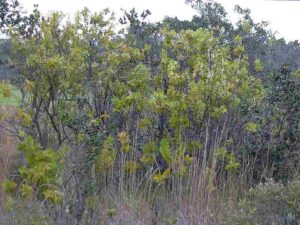
Predators engage in niche partitioning to reduce direct competition. Different predators may adopt specific hunting strategies, target different prey sizes, or be active during different times of the day. This niche partitioning allows multiple predator species to share the same ecosystem without directly competing for resources.
Within a single plant species, individuals may compete for resources like water, nutrients, and sunlight. This intraspecific competition can lead to variations in individual growth rates and survival, contributing to the overall population dynamics of plant species in the tropical dry forest.
Individuals of the same predator species may compete for territory, mating partners, or access to preferred prey. Intraspecific competition influences the social structure and behavior of predator populations, affecting their distribution and impact on the prey community.
Competition among plants exerts evolutionary pressure, driving the development of traits that enhance competitive fitness. For instance, plants may evolve mechanisms to efficiently capture light energy or extract nutrients from the soil, contributing to the continuous adaptation of plant species in the tropical dry forest.
Competition among predators can lead to the evolution of specialized hunting techniques, increased agility, or adaptations for capturing specific types of prey. These evolutionary responses contribute to the diversity and ecological roles of predators within the tropical dry forest.
Competition promotes species coexistence by preventing the dominance of a single plant species. Different species with varying resource requirements can share the same habitat, contributing to the overall biodiversity and resilience of the tropical dry forest.
The coexistence of multiple predator species, each specializing in different aspects of the prey community, enhances the overall stability and diversity of the predator guild in the tropical dry forest.
-Tropical Dry Forest Abiotic Factors
1). Sunlight
Sunlight is an important abiotic factor in the tropical dry forest, influencing various ecological processes and shaping the structure and functioning of this ecosystem.
The importance of sunlight in the tropical dry forest can be assessed with respect to photosynthesis, plant growth and productivity, canopy stratification, niche specialization, biodiversity, temperature regulation, microclimate, seed germination and regeneration, regulation of animal activity, water cycling and evaporation, and phenological events.
Sunlight is the primary source of energy for photosynthesis, the process by which plants convert solar energy into chemical energy. In the tropical dry forest, where sunlight is abundant, this process is vital for the growth and development of plants. Photosynthesis allows plants to produce carbohydrates, which serve as the foundation of the food web.
Sunlight is essential for the growth of plants in the tropical dry forest. The availability and intensity of sunlight influence the rate of photosynthesis and directly impact the productivity of plants. Different plant species in the forest exhibit varying adaptations to capture and utilize sunlight efficiently.
In the vertical stratification of the forest canopy, sunlight is a critical determinant factor. Taller trees in the upper canopy receive more direct sunlight, creating a complex layering effect. This canopy structure allows for niche differentiation among plant species, with each layer adapted to specific light conditions.
Sunlight creates diverse microhabitats within the tropical dry forest. Plants and organisms adapted to different light levels can coexist in these microenvironments, contributing to the overall biodiversity of the ecosystem. Species may specialize in specific niches based on their light requirements.
Also, sunlight influences the microclimate within the tropical dry forest. Areas exposed to direct sunlight experience higher temperatures, while shaded areas may be cooler. This variation in temperature creates microclimates that influence the distribution of plant and animal species, contributing to the overall diversity of the ecosystem.
Sunlight serves as a trigger for the germination of many plant seeds. Seeds that require sunlight to germinate, known as photoblastic seeds, rely on specific light cues to initiate the germination process. This mechanism is crucial for the regeneration and establishment of new plant individuals in the tropical dry forest.
The activity patterns of many animals in the tropical dry forest, are significantly influenced by sunlight. Nocturnal species may be more active during the night when the intensity of sunlight is reduced, while diurnal species may exhibit increased activity during daylight hours. These behavioral adaptations are influenced by the availability of sunlight.
Sunlight plays a role in water cycling within the tropical dry forest. Through the process of evaporation, sunlight contributes to the transformation of water from liquid to vapor, influencing humidity levels and precipitation patterns. This, in turn, affects the water availability for plants and animals in the ecosystem.
Lastly, sunlight influences phenological events in the tropical dry forest, such as flowering, fruiting, and leaf shedding. Changes in sunlight duration, associated with seasons or disturbances, can trigger these events. The timing of phenological events is crucial for the synchronization of ecological processes in the ecosystem.
2). Atmospheric Gases
Atmospheric gases are critical abiotic factors that play a vital role in the functioning of the tropical dry forest ecosystem.
While the composition of Earth's atmosphere is relatively stable, variations in the concentration of certain gases can have profound effects on ecological processes.
Some atmospheric gases in the tropical dry forest and their functions include; oxygen for respiration, carbon dioxide for photosynthesis, greenhouse gases for climate regulation, water vapor for hydrological cycling.
1. Oxygen (O2) for Respiration
Oxygen is essential for the process of respiration in both plants and animals. Plants use oxygen during cellular respiration, particularly during periods when photosynthesis is not occurring, such as at night.
Animals, including insects, birds, and mammals in the tropical dry forest, rely on atmospheric oxygen for their metabolic processes.
2. Carbon Dioxide (CO2) for Photosynthesis
Carbon dioxide is a crucial component for photosynthesis in plants. During this process, plants take in carbon dioxide from the atmosphere, utilize sunlight, and convert it into carbohydrates and oxygen.
This fundamental process is the foundation of the food web and supports the growth and productivity of plant species in the tropical dry forest.
3. Greenhouse Gases and Climate Regulation
Atmospheric gases, including carbon dioxide, methane, and water vapor, contribute to the greenhouse effect. This natural phenomenon helps regulate the Earth's temperature by trapping heat from the sun in the atmosphere.
The balance of greenhouse gases is essential for maintaining suitable temperature conditions in the tropical dry forest and globally.
4. Nitrogen (N2) Fixation
Nitrogen gas (N2) makes up a significant portion of Earth's atmosphere, but most plants cannot use it directly.
Nitrogen-fixing bacteria in the soil convert atmospheric nitrogen into a form that plants can absorb and utilize. This process is crucial for nitrogen cycling, supporting the growth of plants in the tropical dry forest.
5. Water Vapor (H2O) and Hydrological Cycling
Water vapor in the atmosphere is a key factor in the water cycle. Evaporation from the surface, including from leaves of plants in the tropical dry forest, contributes to water vapor in the atmosphere.
Condensation and subsequent precipitation bring water back to the Earth's surface, influencing the availability of water for plants, animals, and other organisms.
*Other Concepts Related to Atmospheric Gases in the Tropical Dry Forest
Atmospheric gases in the tropical dry forest can also be understood from conceptual standpoints like; wind patterns, trace gases, air quality, aerosols and particulate matter.
Air pressure variations and wind patterns influence the dispersal of seeds in the tropical dry forest. Some plants rely on wind to carry their seeds over distances, contributing to the distribution and colonization of new areas. The atmospheric environment plays a role in shaping plant communities through seed dispersal mechanisms.
Certain trace gases in the atmosphere can affect air quality in the tropical dry forest. For example, ozone at ground level can have detrimental effects on plant health, influencing photosynthesis and overall ecosystem productivity. Understanding the composition of trace gases is crucial for assessing and managing air quality in the ecosystem.
Atmospheric gases may interact with aerosols and particulate matter, influencing climate and air quality. Aerosols can affect cloud formation, precipitation patterns, and even impact the health of plants and animals in the tropical dry forest. The interactions between atmospheric gases and particulate matter have implications for both climate and ecosystem health.
3). Water
Water is a critical abiotic factor in the tropical dry forest, influencing various ecological processes and shaping the structure and dynamics of this ecosystem.
Despite the seasonally dry conditions, water availability remains essential for the survival and functioning of the diverse flora and fauna in the tropical dry forest.
The importance of water in the tropical dry forest can be traced to factors like plant growth, photosynthesis, hydration and turgor pressure, seed germination, plant regeneration, animal survival, aquatic habitat diversity, temperature regulation, productivity, adaptation, soil conditions, and seasonality.
Water is a fundamental component for photosynthesis, the process by which plants convert sunlight into chemical bioenergy. In the tropical dry forest, where sunlight is abundant, water availability is crucial for the growth and productivity of plants. It enables them to produce carbohydrates, supporting the foundation of the food web.
Also, water is essential for maintaining the structural integrity of plant cells through turgor pressure. Turgor pressure helps cells remain firm, ensuring that plant tissues can support themselves and contribute to the overall structure of the tropical dry forest vegetation.
Water is necessary for the germination of seeds in the tropical dry forest. Many plant species rely on the availability of water to trigger the germination process. Adequate water enables the seeds to absorb and transport nutrients, facilitating the establishment of new plant individuals and promoting overall regeneration.
Another area where water is vital, is the survival of animals in the tropical dry forest. Many species, including mammals, birds, and insects, depend on water sources for drinking. During dry periods, the availability of water influences the distribution and abundance of animal species, impacting the overall ecology of the ecosystem.
Water bodies, such as rivers, streams, ponds, and seasonal pools, contribute to the diversity of habitats within the tropical dry forest. These aquatic environments support a variety of species, including amphibians, insects, and aquatic plants, adding to the overall biodiversity of the ecosystem.
In the tropical dry forest, water has a moderating effect on temperature extremes. Bodies of water can act as heat sinks, absorbing and releasing heat more slowly than the surrounding land. This moderating influence contributes to more stable microclimates, providing a refuge for plants and animals during hot periods.
Water is involved in the transfer of energy and the cycling of nutrients within the tropical dry forest ecosystem. It facilitates the movement of nutrients through soil, supports microbial activity, and contributes to the overall productivity of the ecosystem, sustaining the diverse trophic levels.
Many plant and animal species in the tropical dry forest have evolved adaptations to cope with water scarcity. Drought-resistant plant species may have specialized root systems, succulent tissues, or other mechanisms to conserve water. Similarly, animals may exhibit behavioral adaptations, such as seeking shade or burrowing, to minimize water loss.
Water is integral to hydrological processes that influence soil moisture levels. Adequate soil moisture is essential for plant roots to access nutrients and for the overall health of the vegetation. Variations in water availability impact the composition and structure of plant communities in the tropical dry forest.
In the tropical dry forest, where there are distinct wet and dry seasons, water availability undergoes significant fluctuations. Species in this ecosystem have evolved strategies to cope with water scarcity during the dry periods, emphasizing the importance of water in shaping the life cycles and behaviors of both plants and animals.
4). Soil
Soil is an abiotic component of the tropical dry forest, instrumental in supporting the diverse flora and fauna of this ecosystem.
The characteristics of the soil, including its composition, structure, and nutrient content, significantly influence the growth and distribution of plants, which, in turn, shape the entire ecosystem.
Factors highlighting the importance of soil in the tropical dry forest include; nutrient availability, water retention and availability, root penetration and anchorage, microbial activity and biodegradation, plant adaptation, erosion dynamics, seed germination, microhabitat creation, and landform development.
Soil serves as a medium for plant roots to anchor and extract essential nutrients. In the tropical dry forest, where nutrient availability can be a limiting factor, the composition of the soil plays a key role in determining the types of plant species that can thrive. Nutrients such as nitrogen, phosphorus, and potassium are vital for plant growth and development.
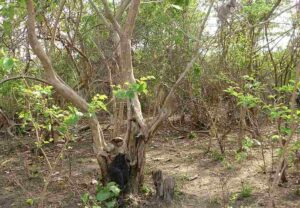
The ability of soil to retain and release water is crucial in the tropical dry forest, where water availability varies seasonally. Well-structured soils with good water retention properties help sustain plant life during dry periods by providing a reservoir of moisture for plants to access.
The physical structure of the soil is essential for root penetration and anchoring. The ability of plants to establish a stable root system in the soil influences their resistance to erosion and their overall ability to withstand environmental stressors, such as strong winds and heavy rainfall.
Soil is home to a diverse community of microorganisms, including bacteria and fungi, which play a crucial role in nutrient cycling. Microbial activity is essential for decomposing organic matter, releasing nutrients back into the soil, and contributing to the overall fertility of the tropical dry forest ecosystem.
The pH level of the soil affects the availability of nutrients to plants. Some plants in the tropical dry forest are adapted to specific soil pH conditions. Understanding the soil pH is crucial for predicting the types of vegetation that can thrive in different areas of the ecosystem.
The soil structure and the presence of vegetation help control erosion in the tropical dry forest. Plants with well-developed root systems stabilize the soil, reducing the risk posed by agents of erosion caused like wind and water. This, in turn, maintains the integrity of the ecosystem and supports plant and animal life.
Soil provides a suitable medium for seed germination. The composition and condition of the soil influence the success of seed germination and the establishment of new plants. Soil acts as a seed bed, supporting the regeneration and diversity of plant species in the tropical dry forest.
Soil variations contribute to the creation of diverse microhabitats within the tropical dry forest. Different soil types and conditions influence the types of plants that can grow in specific areas, leading to a mosaic of habitats that support a rich diversity of flora and fauna.
The mineral composition of the soil influences plant physiology and adaptation. Some plants have evolved specific mechanisms to tolerate or accumulate certain minerals present in the soil, allowing them to thrive in particular soil types and contributing to the overall diversity of the tropical dry forest.
Soil processes contribute to the development of landforms in the tropical dry forest. The interaction between weathering, and erosional processes, influences the topography of the landscape, shaping the distribution of vegetation and contributing to the overall structure of the ecosystem.
5). Rocks
Rocks constitute an essential abiotic factor in the tropical dry forest, which contributes to the physical structure, nutrient cycling, and overall ecological dynamics of the ecosystem.
While they may not be as immediately apparent as soil or water, rocks play a critical role in shaping the landscape and influencing the distribution of flora and fauna.
The importance of rocks in the tropical dry forest stems from its role as a substrate for soil formation, contribution to mineral dynamics, influence on landform and topography, contribution to microhabitats, influence on erosion dynamics, among others discussed below;
Rocks act as the foundation for soil development in the tropical dry forest. Weathering processes, including physical and chemical breakdown of rocks over time, contribute to the formation of soil. The composition of the rocks influences the nutrient content and characteristics of the resulting soil.
The mineral composition of rocks determines the types and amounts of nutrients released into the soil through weathering. Plants in the tropical dry forest rely on these nutrients for growth. The presence of certain minerals in rocks can influence the types of vegetation that can thrive in specific areas.
Rocks contribute to the creation of diverse landforms and topography in the tropical dry forest. Erosion, weathering, and other geological processes shape the landscape, creating uprises, depressions, and other features that influence water drainage, microclimates, and habitat heterogeneity.
Rock outcrops and formations create diverse microhabitats within the tropical dry forest. Plants and animals adapted to rocky environments may thrive in these areas, contributing to biodiversity. Rock surfaces can offer refuge, nesting sites, and specialized conditions for certain species.
Rocks provide stability to the soil by preventing erosion. They act as natural barriers that protect against the impacts of water and wind, reducing the risk of soil loss. This erosion control is crucial for maintaining the integrity of the landscape and supporting vegetation.
Rocks influence water dynamics by contributing to water retention and release in the tropical dry forest. Porous rocks may store water, making it available to plants during dry periods. Water released from rocks contributes to the overall hydrological processes in the ecosystem.
Some plants in the tropical dry forest have evolved adaptations to grow in rocky substrates. These adaptations may include specialized root systems that anchor into rock crevices, allowing plants to access nutrients and water. The presence of rocky substrates influences the distribution and composition of plant communities.
Rocks create habitat features that support various animal species in the tropical dry forest. Small mammals, reptiles, insects, and birds may use rock formations for shelter, nesting, or as vantage points for hunting. The variety of microhabitats created by rocks contributes to overall habitat diversity.
Geological processes involving rocks contribute to ecological succession in the tropical dry forest. Primary succession on bare rock surfaces, followed by the development of soil and the establishment of pioneer plant species, is a key aspect of the ecosystem's regeneration and development over time.
Rocks in the tropical dry forest have educational and recreational value. They provide opportunities for studying geological processes, understanding the history of the landscape, and appreciating the scenic beauty of rock formations. These aspects contribute to the cultural and aesthetic significance of the ecosystem.
6). Nutrients
Factors that make nutrients important as abiotic factors in the tropical dry forest, include their contributions to plant growth, microbial processes, ecological health, soil fertility, and trophic regulation.
Nutrients, including nitrogen, phosphorus, potassium, and various micronutrients, are essential for the photosynthetic process in plants. Photosynthesis is the primary mechanism by which plants convert sunlight into energy, producing carbohydrates that serve as the foundation for the entire food web in the tropical dry forest.
The cycling of nutrients, facilitated by decomposers such as bacteria and fungi, is crucial for maintaining ecosystem productivity. Decomposers break down organic matter, releasing nutrients back into the soil. This process supports the growth of plants and contributes to the overall health of the tropical dry forest.
Nutrient availability often serves as a limiting factor for plant growth and distribution in the tropical dry forest. Certain areas with nutrient-rich soils may support diverse plant communities, while nutrient-poor soils may restrict the types of vegetation that can thrive. This variation influences the overall structure of the ecosystem.
Plants in the tropical dry forest have evolved adaptive strategies to cope with nutrient scarcity. Some species may develop specialized root systems to efficiently extract nutrients from the soil, while others may form symbiotic relationships with mycorrhizal fungi to enhance nutrient absorption.
Availability of nutrients is critical for the establishment and growth of seedlings in the tropical dry forest. Seeds require essential nutrients for germination and early growth. Adequate nutrient levels in the soil support successful seedling establishment, influencing the regeneration and diversity of plant species.
The nutrient content in both the soil and plants influences the nutritional quality of vegetation for herbivores. Animals in the tropical dry forest depend on nutrient-rich plants for their dietary needs. Variations in nutrient availability can impact the health and abundance of herbivores and, subsequently, their predators.
Imbalances in nutrient availability can impact the health of plants in the tropical dry forest. Deficiencies or excesses of specific nutrients can lead to physiological stress, susceptibility to diseases, and reduced resistance to ecological stressors such as drought or pests. Nutrient balance is crucial for maintaining plant health and resilience.
Nutrients fuel microbial activity in the soil. Microorganisms play a key role in nutrient cycling, decomposition, and the release of nutrients for plant uptake. The microbial community contributes to soil fertility, influencing the overall nutrient status of the tropical dry forest ecosystem.
Nutrients in leaf litter and organic matter contribute to decomposition processes. Decomposers break down this material, releasing nutrients back into the soil. This nutrient recycling is essential for sustaining the nutrient balance and supporting the continuous growth of vegetation in the ecosystem.
Lastly, nutrient availability influences the abundance and nutritional quality of plant resources. This, in turn, affects herbivores, omnivores, and carnivores within the tropical dry forest food chain. Nutrient availability plays a role in regulating trophic levels, shaping the structure and dynamics of the entire ecosystem.
7). Physicochemical Parameters
Physicochemical parameters in the tropical dry forest include; temperature, humidity, light intensity, solar radiation, wind speed, rainfall patterns, soil pH, moisture content, air quality, fire frequency and intensity. Each of these is discussed briefly below;
Temperature is a critical physicochemical parameter that influences biological processes in the tropical dry forest. It affects the rates of photosynthesis, respiration, and other metabolic activities in plants and animals. Temperature variations also contribute to the development of microclimates within the ecosystem, influencing the distribution of species.
Humidity levels influence water availability in the tropical dry forest. Low humidity, characteristic of dry environments, can contribute to water stress for plants and animals. The interplay between temperature and humidity contributes to the overall water dynamics and shapes the adaptation strategies of organisms in the ecosystem.
Light intensity is crucial for photosynthesis in plants. In the tropical dry forest, where sunlight is abundant, variations in light intensity influence the growth and distribution of plant species. Canopy stratification, created by differences in light availability, contributes to the formation of distinct layers within the forest.
Solar radiation provides the primary energy input for ecological processes in the tropical dry forest. It drives photosynthesis, regulates temperature, and influences the overall energy balance within the ecosystem. The intensity and duration of solar radiation play a key role in shaping the ecology of the forest.
Wind speed influences seed dispersal in the tropical dry forest. Some plants rely on wind for the dispersal of seeds over varying distances, contributing to the colonization of new areas. Wind also affects transpiration rates in plants and can influence microclimate conditions within the ecosystem.
Rainfall patterns are crucial for water availability in the tropical dry forest, which experiences distinct wet and dry seasons. The timing, intensity, and duration of rainfall events influence the water balance, plant growth, and overall ecosystem dynamics. Plants and animals have evolved strategies to cope with seasonal variations in rainfall.
Soil pH is a physicochemical parameter that influences nutrient availability to plants. Different plant species may have specific pH preferences, and variations in soil pH can affect the types of vegetation that thrive in certain areas of the tropical dry forest. Soil pH also influences microbial activity and nutrient cycling.
Soil moisture content is crucial for plant growth and survival. The availability of water in the soil influences nutrient uptake, root development, and overall plant health. Variations in soil moisture contribute to the creation of microhabitats and influence the distribution of plant species within the ecosystem.
Topographic features, such as hills, valleys, and slopes, are influenced by physicochemical parameters. The slope of the terrain can affect water drainage, soil erosion, and microclimate conditions. These topographic variations contribute to the overall heterogeneity of the tropical dry forest landscape.
Physicochemical parameters like air quality, influence the health of organisms in the tropical dry forest. Factors such as air pollutants or aerosols can have direct and indirect effects on plant and animal health. Monitoring and understanding air quality are essential for assessing the well-being of the ecosystem.
Temperature and humidity influence the frequency and intensity of wildfires in the tropical dry forest. Fire is a natural disturbance that plays a role in shaping vegetation patterns, nutrient cycling, and the overall ecological dynamics of the ecosystem.
8). Microclimate
Microclimate, referring to the localized climate conditions within a specific habitat, is a critical abiotic factor in the tropical dry forest.
It can be analyzed in terms of temperature variation, humidity levels, light availability/intensity, wind patterns, soil conditions, topography, canopy and shade, season changes, thermal conditions and microbial dynamics.
Microclimate influences temperature variations within the tropical dry forest. Certain areas may experience higher temperatures or exhibit temperature fluctuations, creating diverse microhabitats. This variability influences the types of plant and animal species that can adapt to specific temperature conditions, contributing to overall biodiversity.
Microclimate significantly influences humidity levels in localized areas. In the tropical dry forest, where water availability can vary, microclimates with higher humidity may provide crucial moisture for plants and animals. Organisms may exhibit specific adaptations to thrive in microhabitats with distinct humidity levels.
Also, microclimate is related to light intensity within different layers of the forest canopy. Variations in light availability influence the stratification of the canopy, creating distinct layers with varying levels of sunlight exposure.
Microclimate encompasses local wind patterns, which can impact processes such as seed dispersal and transpiration in plants. Wind-exposed areas may facilitate the dispersal of seeds over longer distances, contributing to the colonization of new areas. Wind also affects transpiration rates and water loss in plants.
Soil moisture content within specific areas of the tropical dry forest, is influenced by microclimate. Microhabitats with higher moisture levels may support unique plant communities adapted to these conditions. Variations in soil moisture contribute to the creation of diverse microenvironments and influence the distribution of flora.
Topographic features, such as slopes, valleys, and hills, contribute to the creation of microclimates. These features influence factors like temperature, humidity, and wind patterns. The interaction between topography and microclimate shapes localized conditions within the tropical dry forest, impacting the distribution of species.
Microclimate influences (and is influenced by) the amount of canopy cover and shade in different areas of the tropical dry forest. Plants exhibit adaptations to thrive in specific light conditions, and the availability of shade can influence the growth and establishment of certain species. Microclimatic variations contribute to the diversity of plant adaptations.
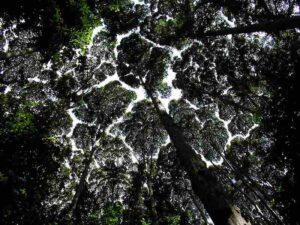
Microclimate plays a role in seasonal changes within the tropical dry forest. Changes in temperature and rainfall patterns influence phenological events such as flowering, fruiting, and leaf shedding. Microclimatic conditions contribute to the timing and synchronization of these events, influencing ecological processes.
Microclimates can serve as thermal refuges during extreme temperature conditions. Certain areas may provide shelter from high temperatures or frost events, offering a favorable environment for organisms to cope with climatic extremes. These microclimatic refuges are essential for the survival of specific species.
Microclimate conditions impact microbial activity in the soil. Temperature and moisture variations influence the rate of decomposition, nutrient cycling, and other soil processes. The microbial community in different microclimates contributes to the overall health and fertility of the tropical dry forest ecosystem.
9). Elevation
Elevation is another abiotic factor in the tropical dry forest, which is linked to; temperature gradients, climatic zones, vegetation zonation, hydrological patterns, slope and aspect, temperature-dependent phenology, animal migration, climate refuges, fire frequency and severity.
Elevation is closely associated with temperature gradients in the tropical dry forest. As elevation increases, there is a general trend of decreasing temperatures. This temperature variation influences the distribution of plant and animal species, creating distinct zones with specific temperature regimes.
Different elevations within the tropical dry forest contribute to the formation of climate zones and microclimates. Each elevation level may have unique temperature, humidity, and precipitation patterns, creating diverse habitats. The variation in microclimates influences the types of vegetation and the adaptations of organisms.
Elevation contributes to vegetation zonation within the tropical dry forest. Different elevation levels support specific plant communities adapted to the prevailing environmental conditions. This results in a vertical stratification of vegetation, with distinct species compositions at different elevations.
Altitudinal gradients associated with elevation contribute to biodiversity in the tropical dry forest. The range of elevations provides opportunities for a variety of plant and animal species to inhabit specific niches. High biodiversity often corresponds to areas with a diverse range of elevations.
Elevation affects hydrological patterns within the tropical dry forest. Changes in elevation impact rainfall distribution, water runoff, and soil moisture content. The availability of water at different elevations influences the types of vegetation that can thrive and contributes to the overall hydrology of the ecosystem.
Elevation is often associated with slope and aspect, influencing the exposure of a particular area to sunlight. Slope and aspect variations contribute to the creation of diverse microenvironments with different light availability. This, in turn, influences plant adaptations and the structure of the vegetation.
Temperature-dependent phenological events in the tropical dry forest are also influenced by elevation. Changes in temperature with increasing elevation affect the timing of flowering, fruiting, and other life cycle events of plants. This elevation-dependent phenology contributes to the overall ecological dynamics of the ecosystem.
Elevation can serve as migration corridors for certain species. Organisms may move up or down in elevation in response to changes in climate, resource availability, or other factors. Elevation gradients provide pathways for species to adapt to changing conditions over time.
Higher elevations can serve as climatic refuges during periods of climate change. As temperatures increase at lower elevations, some species may migrate to higher elevations where conditions are more favorable. Elevation gradients thus contribute to the resilience of ecosystems in the face of climate change.
Lastly, elevation can influence the frequency and severity of wildfires in the tropical dry forest. Higher elevations may experience different fire regimes compared to lower elevations, impacting vegetation dynamics and the composition of plant communities.
Conclusion
Tropical dry forest biotic factors are;
1. Primary Producers
2. Herbivores
3. Carnivores
4. Omnivores
5. Decomposers
6. Mutualism
7. Parasitism
8. Predation
9. Competition
10. Adaptation
Tropical dry forest abiotic factors are;
1. Sunlight
2. Atmospheric Gases
3. Water
4. Soil
5. Rocks
6. Nutrients
7. Physicochemical Parameters
8. Microclimate
9. Elevation

